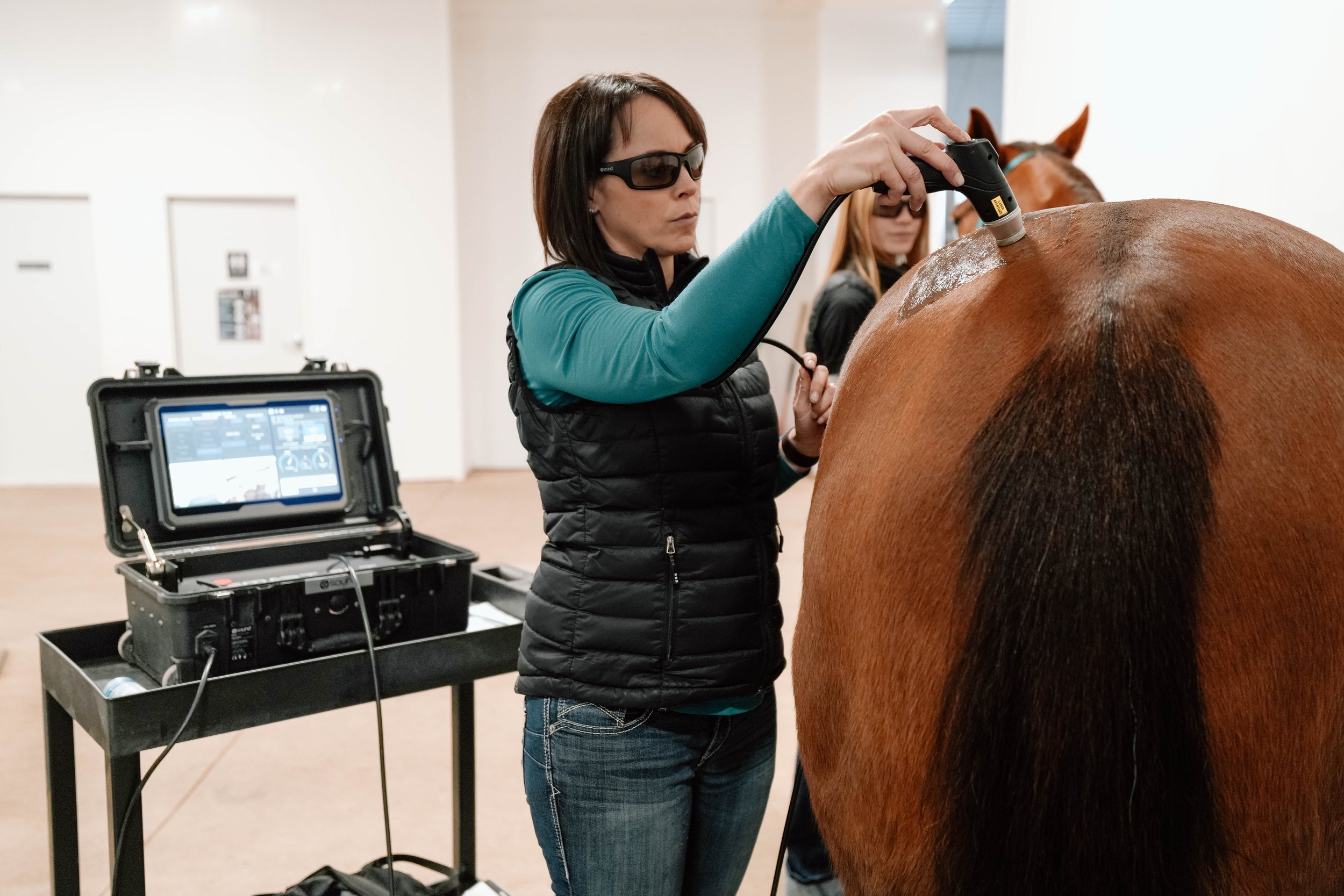Equine Therapy Programs: Transforming Lives One Adventure at once
Equine Therapy Programs: Transforming Lives One Adventure at once
Blog Article
Evaluating the Efficiency of Laser Treatment in Equine Therapy for Injury Rehabilitation
The analysis of laser therapy's efficiency in equine injury rehabilitation hinges on several variables, including recuperation time, discomfort reduction, and cells regeneration. Veterinarians frequently observe exceptional results with laser therapy contrasted to standard methods, placing it as an important aspect in equine care.
Understanding Laser Treatment
Laser treatment has come to be a pivotal tool in veterinary medication, especially in the therapy of equine conditions. Recognized for its non-invasive nature and efficacy, laser treatment entails the application of details wavelengths of light to promote tissue repair work and minimize inflammation. This healing modality is progressively favored for its ability to speed up the healing process in horses dealing with a variety of bone and joint injuries and persistent conditions.
The main mechanism behind laser therapy is its capability to improve cellular functions. Additionally, laser therapy promotes vasodilation, improving blood flow and oxygen shipment to broken tissues, hence speeding up recovery.
In equine medication, laser therapy is specifically valuable for conditions such as tendonitis, osteoarthritis, and wound recovery. The strategy is lauded for its pain-relieving residential properties, permitting steeds to regain flexibility and function extra swiftly. Vets likewise appreciate its minimal negative effects compared to various other therapy methods, making it a reliable and secure choice for equine treatment.

Just How Laser Treatment Functions

Upon absorption, these photons set off a collection of biochemical adjustments, enhancing mitochondrial feature and bring about increased adenosine triphosphate (ATP) production. This rise in ATP accelerates cellular metabolic process, promoting tissue repair and regeneration. Furthermore, laser treatment regulates inflammatory actions by impacting cytokine degrees and lowering oxidative tension, consequently alleviating discomfort and swelling.
An additional substantial element of laser treatment is its function in enhancing microcirculation. The therapy promotes vasodilation, boosting blood flow and oxygen delivery to damaged cells (Equine Therapy). This helps with the elimination of mobile debris and supports the expansion of fibroblasts and collagen synthesis, essential for wound healing
Medical Evidence
The efficacy of laser therapy in equine treatment has actually been corroborated with various clinical research studies, showcasing its therapeutic potential across a range of conditions. A study carried out by Turner et al. (2012) demonstrated that steeds treated with low-level laser treatment (LLLT) for ligament injuries exhibited accelerated recovery compared to those obtaining conventional treatments.
Likewise, research by Johnson and coworkers (2015) concentrated on equine muscular tissue injuries, revealing that laser therapy considerably quickened muscle fiber regeneration and lowered muscle tightness. These searchings for were substantiated by histological evaluations showing better muscle cells organization. Moreover, medical analyses have revealed that laser treatment can reduce chronic problems such as osteo arthritis. A study by Smith et al. (2018) reported that equines with osteoarthritic joints experienced remarkable discomfort alleviation and boosted series of activity following a program of laser therapy sessions.
Vet Insights

Veterinarians additionally value the flexibility of laser treatment. She directs out that laser therapy can be tailored to the particular needs of each horse, making certain ideal outcomes.
Furthermore, vets value the capability to incorporate laser therapy with various other therapy methods. This multimodal technique can improve total treatment efficiency, giving a thorough service for equine rehabilitation. Such endorsements read more from seasoned experts emphasize the growing approval and application of laser treatment in equine medication.
Practical Factors To Consider
An essential aspect of applying laser treatment in equine treatment involves understanding the sensible factors to consider that ensure its effectiveness and safety and security. It is important to choose the suitable laser device, as various types vary in wavelength, power, and penetration depth. Vets need to be well-versed in these parameters to tailor treatment protocols efficiently to each injury kind
Moreover, the frequency and period of laser therapy sessions need careful planning to make best use of therapeutic benefits while reducing any prospective damaging results. Constant monitoring of the equine's reaction to treatment can guide needed adjustments in the treatment regimen. Developing a secure and regulated environment during treatments is additionally necessary to avoid unintentional direct exposure to laser emissions, which could harm both the horse and the trainer.
Training and accreditation of personnel administering laser therapy are critical to ensure correct method and to promote safety and security standards. In addition, maintaining accurate records of each session, consisting of laser setups and observed outcomes, is important for assessing the total performance of the treatment and for making data-driven choices.
Final Thought
Laser treatment has actually emerged as an effective technique in equine injury recovery, offering significant advantages in recuperation time, pain alleviation, and cells recovery. Clinical studies underscore considerable improvements in conditions such as tendonitis and osteo arthritis, connected to boosted cellular function and boosted ATP manufacturing. Veterinarian monitorings support these findings, highlighting exceptional end top article results compared to conventional therapies. For optimal outcomes, constant tracking and individualized therapy methods remain important in leveraging the full possibility of laser treatment in equine treatment.
Report this page